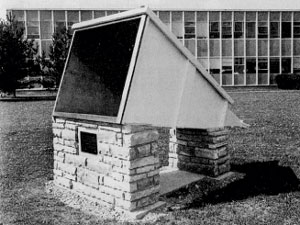
This Article From Issue
November-December 2002
Volume 90, Number 6
DOI: 10.1511/2002.39.0
Hydrogen: The Essential Element. John S. Rigden. vii + 280 pp. Harvard University Press, 2002. $28.00.
In the beginning was hydrogen, which appeared in atomic form a mere 300,000 years after the Big Bang. Now hydrogen constitutes about 90 percent of the visible universe. In many senses, it comes first among the elements, and its story commands retelling. John S. Rigden—director of special projects at the American Institute of Physics, former editor of the American Journal of Physics and author of a biography of I. I. Rabi—has taken on the challenge and produced an accessible, congenial book for the general reader.
Rigden begins with a glance back at the cosmological origins of hydrogen and its ancient pedigree. His earthly history begins with William Prout, who argued in 1815 that hydrogen was the primordial element.
Next comes a bare mention of the story of the discovery of hydrogen as an element. Many important figures were involved: Paracelsus, Johann van Helmont, Robert Boyle, Henry Cavendish, Joseph Priestley and Antoine-Laurent Lavoisier (who named it). Their struggle to understand this "inflammable air," notably absent from earth's atmosphere, is important and interesting in its own right. Given a fuller treatment, it would have provided the chemical context of Prout's idea and the important developments that followed.

From Hydrogen
Rigden then jumps 70 years ahead to Johann Jakob Balmer's formulation of the pattern of the spectral lines of hydrogen. From there, he immediately turns to Niels Bohr's bold attempt to account for Balmer's formula and thence to the ensuing story of quantum theory. Evidently, Rigden's goal is to avoid getting bogged down in the early history and instead move as quickly as possible to 20th-century developments in order to emphasize them. This allows him more space to deal with such fascinating topics as nuclear magnetic resonance, Rydberg atoms, hydrogen masers, Bose-Einstein condensates and their implications as tests of fundamental theories of physics. He also devotes attention to several modern scientists whose important work is far too little known to the general public: Edward M. Purcell, Felix Bloch, Norman Ramsey, Daniel Kleppner and others.
This is the strongest part of his book; Rigden recounts the work of these experimental physicists accurately and sympathetically. He includes many telling details, evoking with particular success Purcell's sensitive generosity and Rabi's engaging personality. It is reassuring to know that some great scientists are also noble and kind people.
In general, Rigden's account of the physics and of the history is accurate and well explained. He rightly emphasizes that Werner Heisenberg's 1925 quantum mechanics discarded the attempt to describe the unobserved position of an electron in favor of observable, but much more abstract, quantities. This gives a helpful insight into Heisenberg's theory, which is too often passed over in favor of Erwin Schrödinger's seemingly more intuitive approach.
In this connection, Rigden notes the difficulty of reconstructing the steps that led Schrödinger to his discovery of wave mechanics. Here Rigden seems unaware of Felix Bloch's eyewitness account (in "Heisenberg and the early days of quantum mechanics," Physics Today 28:12, 23–27 [1976]) of Peter Debye suggesting (in 1925) that Schrödinger describe Louis de Broglie's new theory associating waves with particles:
[Debye said to Schrödinger that] as a student of Sommerfeld he had learned that, to deal properly with waves, one had to have a wave equation. It sounded quite trivial and did not seem to make a great impression, but Schrödinger evidently thought a bit more about the idea afterwards. Just a few weeks later he gave a talk at the colloquium which he started by saying: "My colleague Debye suggested that one should have a wave equation; well, I have found one!"
I would like to correct one lapse from Rigden's usual accuracy. Speaking of the extraordinary behavior of Bose-Einstein condensates, he notes that, in such situations, "if these atoms are bosons and if they can be cooled to the point where their wavelengths begin to overlap, they merge their individual identities, enter a single quantum state, become indistinguishable from each other, and 'dance in perfect unison.'" This is misleading, since it implies that otherwise atoms have individual identities and are distinguishable. Not so; in general, atoms and all known fundamental particles have no individuality at all. This is a crucial feature of quantum theory, which becomes manifest in the superb experiments that Rigden describes, but was present all along.
Rigden ends by reminding us that the saga of hydrogen continues. Great chapters may well lie in the future. He notes that any arrogant claims about the impending "end" of physics may well be upset by discoveries about this humblest but also proudest of elements. His book deserves praise for introducing a wider audience to the rich story of hydrogen.—Peter Pesic, St. John's College, Santa Fe, New Mexico
American Scientist Comments and Discussion
To discuss our articles or comment on them, please share them and tag American Scientist on social media platforms. Here are links to our profiles on Twitter, Facebook, and LinkedIn.
If we re-share your post, we will moderate comments/discussion following our comments policy.